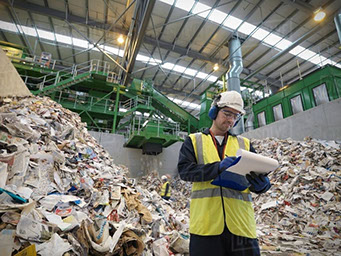If you’re involved in recycling, landscaping, or managing waste materials, you’ve probably heard of a cardboard chipper. This powerful machine is designed to efficiently process large quantities of cardboard into manageable, mulched pieces. Whether you’re running a business or simply looking for an effective way to dispose of excess cardboard, understanding what a cardboard chipper is, its features, and the best options available can make a significant difference.
| For landfill-free waste and recycling services, including sorting, baling, shredding and compaction equipment, or to explore earning money from your recycling, contact Integrity Recycling Waste Solutions at (866) 651-4797. |
What Is a Cardboard Chipper?
A cardboard chipper is a specialized type of wood chipper designed specifically to handle cardboard and similar fibrous materials. It operates by feeding large sheets or stacks of flattened boxes into a cutting mechanism that tears or shreds them into smaller, manageable pieces. These chips are often used for mulch, composting, or waste management.
Unlike general wood chippers that primarily process branches and logs, cardboard chippers focus on soft, lightweight material, making them ideal for recycling centers, warehouses, and businesses with high cardboard waste output. They help reduce the volume of waste, facilitate recycling, and contribute to environmentally friendly disposal practices.
How Does a Cardboard Chipper Work?
Understanding the basic operation of a cardboard chipper helps in maximizing its utility and ensuring safe usage.
Step-by-Step Guide:
- Preparation: Flatten and stack the cardboard to fit the feed chute comfortably.
- Setup: Ensure the machine is on a stable surface, check safety guards and emergency stops.
- Feeding: Insert the cardboard into the feed inlet, avoiding fingers or loose clothing.
- Operation: Turn on the machine and let it process the material, monitoring the flow.
- Collection: Collect shredded material from the discharge area for composting, mulching, or disposal.
- Shutdown: Turn off the machine and clean any debris from the blades or discharge area.
Safety Tips:
- Always wear safety goggles and gloves.
- Never insert hands into the feed opening.
- Keep children and pets away during operation.
- Regularly inspect and maintain blades and belts to ensure optimal performance.
| For landfill-free waste and recycling services, including sorting, baling, shredding and compaction equipment, or to explore earning money from your recycling, contact Integrity Recycling Waste Solutions at (866) 651-4797. |
Factors to Consider When Choosing a Cardboard Chipper
Before purchasing a cardboard chipper, evaluate the following factors:
Capacity Size
- Determine the volume of cardboard you need to process regularly.
- Match the chipper’s capacity with your demand to avoid overloading or underperforming.
Power Source
- Decide between electric and gas-powered models based on availability of electricity, mobility needs, and power requirements.
Portability
- Consider weight and wheel attachments if you need to move the machine frequently.
Safety Features
- Look for emergency stops, safety shields, and overload protection.
Budget
- Balance features and quality within your financial plan, considering long-term durability.
Comparing Types of Cardboard Chippers
| Feature | Electric Chippers | Gas-Powered Chippers | Industrial-Grade Chippers |
|---|---|---|---|
| Power Source | Electricity | Gasoline | Diesel or heavy-duty electric |
| Portability | Generally portable | More portable, mobile units | Usually stationary or mounted |
| Capacity | Small to medium | Medium to large | Very high |
| Noise Level | Quieter | Louder | Very loud |
| Maintenance | Lower | Higher | Higher |
Summary: Electric chippers are suitable for light to moderate use, offering quiet operation and ease of maintenance. Gas-powered models are better for larger jobs requiring mobility, while industrial chippers serve high-volume demands.
Conclusion
A cardboard chipper is a valuable tool for anyone looking to manage and recycle large quantities of cardboard efficiently. Whether choosing a small electric model for home use or a heavy-duty industrial unit, understanding your specific needs and the features of each model will help you make an informed decision. Proper selection ensures not only operational efficiency but also safety and durability, enabling you to turn waste into a resource effectively. By investing in the right cardboard chipper, you’ll enhance your waste management process and contribute positively to environmental sustainability.
| For landfill-free waste and recycling services, including sorting, baling, shredding and compaction equipment, or to explore earning money from your recycling, contact Integrity Recycling Waste Solutions at (866) 651-4797. |

